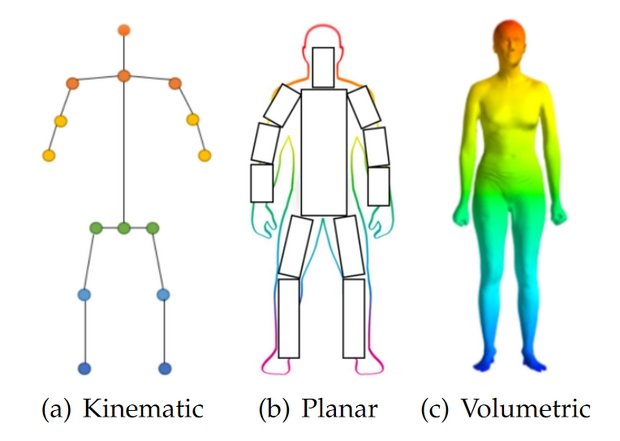

Posture problems, particularly forward head posture (FHP), are becoming increasingly common in modern society due to prolonged periods spent in front of laptop screens and sedentary lifestyles.
Identifying and correcting such issues early can prevent chronic pain and related musculoskeletal disorders.
A groundbreaking study published in JMIR Formative Research has introduced an innovative 3D human pose estimation system that uses graph convolutional networks (GCN) to detect FHP from a single 2D image.
This study is a promising leap towards integrating posture correction into everyday activities, offering real-time feedback to users and potentially reducing the risk of chronic neck pain and other disorders.
Understanding Forward Head Posture and Its Implications
Forward head posture (FHP) is a condition where the head protrudes forward relative to the body’s vertical alignment, placing undue stress on the cervical spine and surrounding muscles.
It is often caused by poor ergonomic habits, such as prolonged use of electronic devices, leading to a cascade of health issues, including neck pain, headaches, and impaired respiratory function.
Research has shown that FHP can result in increased muscle activation in the upper trapezius and cervical extensors, leading to muscle fatigue and discomfort.
A study in the Journal of Physical Therapy Science reported that individuals with FHP have a significantly higher incidence of neck pain and are more prone to developing tension headaches due to the altered biomechanics of the cervical spine.
The Role of 3D Human Pose Estimation in Posture Correction
Traditional methods of diagnosing FHP typically involve clinical assessments and imaging techniques like X-rays, which are not feasible for continuous, real-time monitoring.
This is where 3D human pose estimation technology, such as the one developed in the recent study, becomes invaluable.
By analyzing a single 2D image, the system can estimate the 3D anatomical key points of the upper body and detect deviations from the ideal posture.
The technology employs a graph convolutional network (GCN) to map the spatial relationships between these key points, providing a detailed analysis of the user’s posture.
This information is then used to generate real-time feedback, enabling users to make immediate adjustments to their posture.
How the System Works?
The 3D human pose estimation system developed in the study uses a combination of two algorithms: Detectron2D and VideoPose3D. Detectron2D identifies 2D anatomical key points from the image, while VideoPose3D converts these into a 3D representation.
The GCN then analyzes the spatial configuration of these key points to assess the user’s posture.
During testing, the system achieved an accuracy of over 78% in identifying FHP, demonstrating its effectiveness in a variety of sitting postures.
The GCN model showed a more balanced precision and recall compared to traditional feedforward neural network models, indicating its potential for broader application in posture detection and correction.
Advantages of Using GCN for Posture Detection
The use of GCNs in this system offers several advantages over traditional neural network models. GCNs are particularly effective in understanding complex spatial relationships, which is crucial for accurately assessing and fixing forward head posture.
In the context of FHP, this means the system can more accurately identify subtle deviations in head and neck alignment that may not be apparent to the untrained eye.
Moreover, the study found that the GCN model was better at generalizing across different postures, making it a versatile tool for detecting FHP in various real-world scenarios.
This is a significant improvement over previous models, which often struggled with false positives and missed detections.
Potential Applications and Implications
The development of a system capable of detecting FHP from a single 2D image has several potential applications.
For instance, it could be integrated into smartphone apps or wearable devices, providing users with continuous feedback on their posture.
This would not only help in correcting FHP but also in preventing its development in the first place.
In addition, the technology could be used in clinical settings to monitor the progress of patients undergoing treatment for FHP or other posture-related issues.
By providing objective data on postural improvements, healthcare providers can make more informed decisions about treatment plans and interventions.
Limitations and Future Directions
Despite its promising results, the study acknowledges several limitations. One major challenge is the reliance on high-quality 2D images to accurately estimate 3D poses.
Variations in lighting, camera angle, and image resolution can affect the system’s accuracy. Future research could focus on enhancing the robustness of the system under different environmental conditions.
Another area for improvement is the system’s ability to provide corrective feedback. While the current model can identify FHP, it does not offer specific recommendations for correcting the posture.
Integrating this functionality would make the system more useful for everyday users seeking to improve their posture.
A Promising Tool for Posture Correction
The 3D human pose estimation system developed using GCNs represents a significant advancement in the field of posture correction.
With an accuracy of over 78% in detecting FHP from a single 2D image, the technology offers a practical solution for integrating posture correction into daily life.
Whether through smartphone apps or wearable devices, this system has the potential to help millions of people improve their posture and reduce the risk of chronic pain and related disorders.
As the technology continues to evolve, it is likely that we will see even more sophisticated systems capable of providing personalized, real-time feedback on posture.
For now, this study stands as a testament to the power of machine learning and GCNs in addressing one of the most common health issues of the modern age.
References: